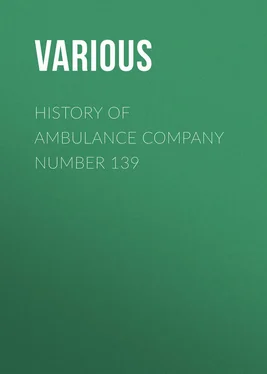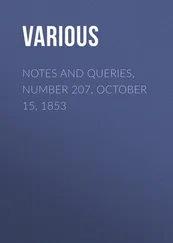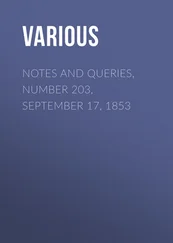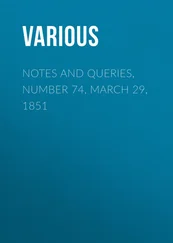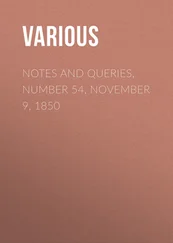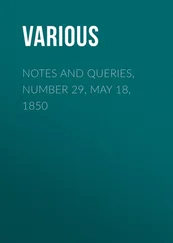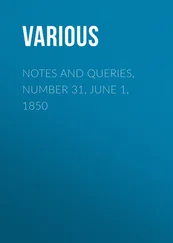Various - History of Ambulance Company Number 139
Здесь есть возможность читать онлайн «Various - History of Ambulance Company Number 139» — ознакомительный отрывок электронной книги совершенно бесплатно, а после прочтения отрывка купить полную версию. В некоторых случаях можно слушать аудио, скачать через торрент в формате fb2 и присутствует краткое содержание. Жанр: Медицина, История, foreign_edu, на английском языке. Описание произведения, (предисловие) а так же отзывы посетителей доступны на портале библиотеки ЛибКат.
- Название:History of Ambulance Company Number 139
- Автор:
- Жанр:
- Год:неизвестен
- ISBN:нет данных
- Рейтинг книги:4 / 5. Голосов: 1
-
Избранное:Добавить в избранное
- Отзывы:
-
Ваша оценка:
- 80
- 1
- 2
- 3
- 4
- 5
History of Ambulance Company Number 139: краткое содержание, описание и аннотация
Предлагаем к чтению аннотацию, описание, краткое содержание или предисловие (зависит от того, что написал сам автор книги «History of Ambulance Company Number 139»). Если вы не нашли необходимую информацию о книге — напишите в комментариях, мы постараемся отыскать её.
History of Ambulance Company Number 139 — читать онлайн ознакомительный отрывок
Ниже представлен текст книги, разбитый по страницам. Система сохранения места последней прочитанной страницы, позволяет с удобством читать онлайн бесплатно книгу «History of Ambulance Company Number 139», без необходимости каждый раз заново искать на чём Вы остановились. Поставьте закладку, и сможете в любой момент перейти на страницу, на которой закончили чтение.
Интервал:
Закладка:
Various
History of Ambulance Company Number 139
THIS BOOK IS AN ATTEMPT TO GIVE A BRIEF ACCOUNT OF THE LIFE OF THE MEN OF AMBULANCE COMPANY NUMBER 139 DURING THEIR SERVICES IN THE GREAT WAR. IT WAS WRITTEN BY THE MEN WHILE THEY WERE AWAITING SAILING ORDERS FOR HOME, IN BARN-LOFT BILLETS OF THE VILLAGE OF AULNOIS-SOUS-VERTUZEY, FRANCE, WHILE THE MEMORIES OF OUR EXPERIENCES WERE STILL FRESH IN OUR MINDS.
ORGANIZATION OF AMBULANCE COMPANY 139
When war was declared on Germany April 5th, 1917, the government sent out calls for volunteers. The auxiliary organizations were to be the first ones to go across, and it looked as if ambulance companies would be among the first to get into action. Many of the universities and colleges in the east started at once to organize ambulance companies. These companies were quickly filled, and the enthusiasm spread quickly to the west.
Early in April Dr. Edwin R. Tenney of Kansas City, Kansas, was appointed by the adjutant general of the State of Kansas to organize a national guard ambulance company in that city. Until this time there had never been a national guard ambulance company in the State of Kansas. Dr. Tenney had been a practicing physician in Kansas City for a number of years and before coming to the city he served as a physician during the Spanish-American war. For the past five years he had held a lieutenant's commission in the U. S. Army Reserve Corps. It was through his efficient work that this company was recruited to full strength within a month after he received his appointment.
The recruiting office in the press room at the city hall was a very busy place during the month of April. Every one was anxious to join some branch of the army. By April 25th the company was recruited to its full strength of sixty-four men and the office was closed. However, orders were received the next day to recruit the company to eighty-four men, so again the office was opened for business with a sign which read, "Join a motor ambulance company and ride ." It was in this office that so many of the men held up their right hand and said that fatal "I do."
About this time Dr. Richard T. Speck, of Kansas City, Kansas, received a lieutenant's commission in the Kansas National Guard and was assigned to this company. A few days later Drs. A. J. Bondurant, of St. Margaret's Hospital, Kansas City, Kansas, and A. H. Adamson, of the General Hospital, Kansas City, Missouri, also received commissions and were assigned to this company.
On April 30th Major Seth A. Hammell, of Topeka, Kansas, mustered the company into the state guard as Kansas Ambulance Company No. 2. Another ambulance company, known as Kansas Ambulance Company No. 1, was organized by Lieutenant W. L. Rhodes, of Argentine, Kansas.
After the state muster the company had two drill nights a week. These drills often interfered with some of the men's plans, but that made no difference as they now belonged to "Uncle Sam" and duty came before pleasure. It was at these semi-weekly drills that the men learned the first principles of soldiering under the leadership of Lieutenant R. T. Speck and Sergeant Roscoe Leady. They were unaccustomed to regular drilling, especially on paved streets, and many times they went home with sore feet from doing "fours right and left" and "to the rear, march."
On June 14th the company was called out for federal inspection and was formally recognized by the federal authorities. This was the first formation in which every one was present, as many of the men lived out of the city and could not come to the drills. After this inspection the men were told to be ready to leave at any time, as it wouldn't be over two weeks at the most before they would be called out. The days dragged slowly, and it seemed that the company would never be called into service. The men were all anxious to start for France and many of them had already given up their positions, thinking that it would be but a short time until they would leave.
On Decoration Day the company was ordered out for a special formation to march to the cemetery and to pay tribute to the heroes of the past. However, it rained so hard that the march was called off and instead the men were assembled in the auditorium of the High School where they listened to an address by J. K. Cubbison.
For a number of years it had been customary for all national guard organizations to go into camp on the night of July 3rd and stay until the 4th, when they would put on an exhibition of some kind. Consequently this company, together with Company A, First infantry, K. N. G., and Battery E, First Field Artillery, K. N. G., went into camp on the night of July 3rd at the City Park. To most of the men this was their first experience in sleeping on the ground, and it will not be easily forgotten, for the next day found every one with aching bones. In the afternoon of the 4th the men of Company A, Infantry, put on a sham battle, and this company followed them up, administering first aid to the "wounded."
LIFE AT CAMP HOEL
It was on the memorable day of August 5th, 1917, that the members of Kansas Ambulance Company No. 2 assembled at the corner of Ninth and Minnesota Avenue, Kansas City, Kansas. As the clock struck nine the order "Fall in" was given. After a few army formalities the company was marched out to Camp Hoel, which was situated at Twentieth Street and Washington Boulevard. It was a spectacular scene for the outsiders and for all the men in the company. It looked more like a parade of college chaps before a football game, as almost all of the fellows were dressed in their "Sunday best." There were a few boys dressed in the khaki, which gave the passerby the idea that we were a part of the great American Army which was being formed. When we reached camp a small white tent was pitched, which was to be our office, supply room and a place of shelter for those boys of the company who did not live in the city or who were not staying at the homes of some of their friends.
Our company was not the only one at this camp, as we had neighbors, who were later designated as follows: Company A, 137th Infantry; Companies B and C of the 110th Regiment of Engineers; Battery E, 130th Field Artillery, and Ambulance Company 140 of the 110th Sanitary Train. The majority of the members of these organizations were Kansas City boys.
In a few days the drills were started. Awkward squads were formed and from all parts of the camp the command of "fours right," "to the rear, march," etc., could be heard. Hikes were numerous, and it was not long until our feet knew all the bumps on every street in Kansas City, Kansas.
The mess for the different companies at Camp Hoel was put in charge of the Central Boarding Company of Kansas City, Missouri. A large tent was erected for the kitchen and it was there that the men were initiated into the secrets of "kitchen police."
After wearing overalls, blue shirts or any other old article that was obtainable, the company was greatly shocked one morning when the news came that part of our equipment had arrived. Here again another dream was shattered, for it seemed that the good fits for the men must have been lost in transit. The large fellows received clothing too small for them, and the small fellows received clothes that would have looked well if they had had about fifty more pounds of muscle upon their skeletons. But as a matter of fact everyone was very proud of the new uniform.
A few days before the uniforms arrived a proposition was laid upon the table for the debate of the company. The great question was, "Shall each member buy leather leggins?" Nobody knew at that time about the uniform rules of the army. Leather leggins looked fine and seemed to be the fashion according to posters and magazine pictures. So the debate was closed and the whole bunch bit on the eight and ten dollar pairs. We used them several times, in fact we wore them in two parades, and were granted the permission to wear them to Doniphan, were we soon sold them at the average price of $5.00 per pair.
Читать дальшеИнтервал:
Закладка:
Похожие книги на «History of Ambulance Company Number 139»
Представляем Вашему вниманию похожие книги на «History of Ambulance Company Number 139» списком для выбора. Мы отобрали схожую по названию и смыслу литературу в надежде предоставить читателям больше вариантов отыскать новые, интересные, ещё непрочитанные произведения.
Обсуждение, отзывы о книге «History of Ambulance Company Number 139» и просто собственные мнения читателей. Оставьте ваши комментарии, напишите, что Вы думаете о произведении, его смысле или главных героях. Укажите что конкретно понравилось, а что нет, и почему Вы так считаете.
